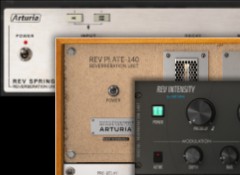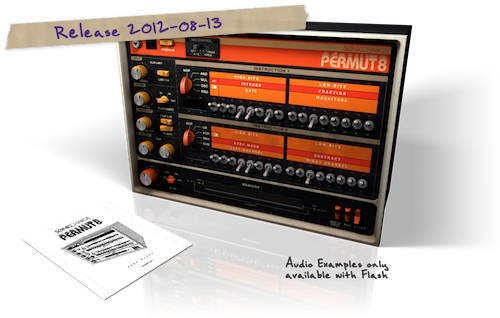
#Sonic charge permut 8 full#
The safesurfer rides a wave between emotion and truth: full of feeling he may be, but what someone listening to him needs to know is the fact of his experience. But he isn't: he's lying, and the record blisters and blisses and bleeps without words to its fade. As his speech turns to song, to melody, he gets real: “You don't have to be afraid, love, 'cos I'm a safesurfer, darling'. When it arrives, his rap is determinedly prosaic, hard speech: senseless ramblings which create nothing but foreboding for what is to follow in the song.

“Safesurfer’ lets its instruments loose at beginning and end, enclosing this risk-taking gigolo's statements.

The record turns round a commonplace of rock music: that in song, words give way to music, a voice's emotion, a guitar's virtuosity. The “safesurfer’ of Julian Cope's song is someone who sleeps around “like HIV ain't never coming down’. The analyses show how the band continued to experiment within popular style and created types of dissonance that influenced 1980s–1990s guitar-based indie rock. In many songs, their dissonant counterpoint works in tandem with their characteristic noisy guitar timbres by occurring in alternation, forcing listeners to continually re-evaluate how they perceive a song as a standard rock track. The second, intervallic dissonance, occurs when instrumental lines are arranged in order to highlight harshly dissonant intervals or chromatic clusters. The first, tonic divergence, occurs when separate lines have phase-mismatched tonic harmonies. Sonic Youth’s strategies for twisting hard-rock norms into clashing harmonies often follow one of two recurring types. But their experimental tendencies persisted through this change, because they overlaid the parts in ways that created incongruity and tweaked hard-rock stylistic features in order to create dissonance or tonal conflict. In the mid-1980s, Sonic Youth’s style changed as they began to incorporate guitar parts that were reminiscent of 1970s hard rock. Sonic Youth originated in No Wave, a movement from the late 1970s and early 1980s that reduced rock to minimal gestures and explored extremes of noise. In the final part of the article, I present analyses of two songs that demonstrate this use: Minor Threat’s “Straight Edge” and Black Flag’s “Rise Above.” These schemes may also play an expressive role in song narratives of energy, intensity, and aggression, all of which are common tropes in oral histories of hardcore. There are four main types, which are defined by the location of repetition within the riff (at the beginning or at the end) and whether the type of repetition is exact or altered: (1) Initial Repetition and Contrast, (2) Statement and Terminal Repetition, (3) Statement and Terminal Alteration, and (4) Model and Sequential Repetition. Many reflect a structural basis in what I call “riff schemes,” organizing patterns of physical repetition and physical change made by a guitarist’s fretting hand. Drawing upon a corpus analysis of recordings by Bad Brains, Black Flag, Dead Kennedys, and Minor Threat, the article begins by outlining the main ways in which guitar riffs are structured. This article explores the structures of guitar riffs in early American hardcore punk rock and their role in the creation of meaning within the genre. I present the analyses in order to provide a foundation for examining other post-punk songs and explaining Sonic Youth's cultural significance in the alternative-rock scene. ‘White Kross’ (1987) transforms hardcore's characteristic stance against authority, creating instead a sense of internal conflict both lyrically and musically. ‘Silver Rocket’ (1988) fragments riffs characteristic of hardcore and substitutes a large-scale constructive principle for musical narrative in its verse and chorus.

Examining lyrics, scalar subsets, gestural motions on the guitar, timbre, references to formal archetypes and cues for pitch centricity, this article shows revision in two Sonic Youth songs from the late 1980s. Sonic Youth embraced hardcore in the early 1980s as a means of expanding beyond their no-wave origins, but because of a cultural gulf between them and other hardcore bands, their successful appropriation of hardcore necessarily involved fragmentation and ironic reversal of its stylistic elements, combined with formally unorthodox means of re-integrating those elements. This article uses Harold Bloom's concept of revision, defined as a reading that is simultaneously a re-interpretation, to examine how the alternative band Sonic Youth transformed the hardcore style.


 0 kommentar(er)
0 kommentar(er)
